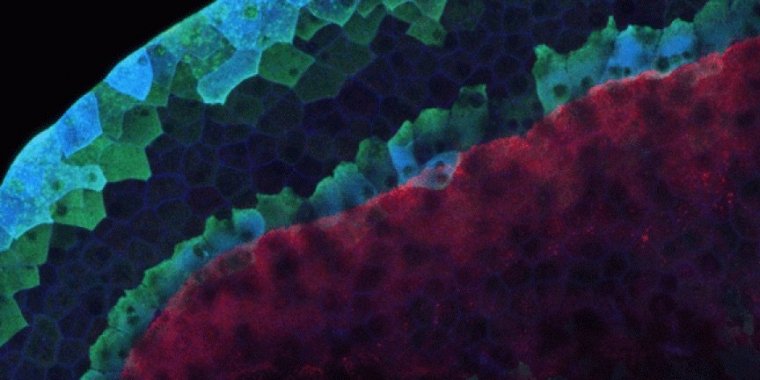| News / Science News |
Scientists find new type of cell that helps tadpoles’ tails regenerate
Researchers at the University of Cambridge have uncovered a specialised population of skin cells that coordinate tail regeneration in frogs. These ‘Regeneration-Organizing Cells’ help to explain one of the great mysteries of nature and may offer clues about how this ability might be achieved in mammalian tissues.

Regeneration-organizing cells outline the advancing edge of a regenerating tail of a tadpole. Photo: Can Aztekin/Wellcome Trust Cancer Research UK Gurdon Institute
Using ‘single-cell genomics’, scientists at the Wellcome Trust Cancer Research UK Gurdon Institute at the University of Cambridge developed an ingenious strategy to uncover what happens in different tadpole cells when they regenerate their tails.
Recent Cambridge-led advances in next-generation sequencing mean that scientists can now track which genes are turned on (being expressed) throughout a whole organism or tissue, at the resolution of individual cells. This technique, known as ‘single-cell genomics’, makes it possible to distinguish between cell types in more detail based on their characteristic selection of active genes.
These breakthroughs are beginning to reveal a map of cellular identities and lineages, as well as the factors involved in controlling how cells choose between alternative pathways during embryo development to produce the range of cell types in adults.
The researchers found that the regenerative response of stem cells is orchestrated by a single sub-population of epidermal (skin) cells, which they termed Regeneration-Organizing Cells, or ROCs.
After tail amputation, ROCs migrate from the body to the wound and secrete a cocktail of growth factors that coordinate the response of tissue precursor cells. These cells then work together to regenerate a tail of the right size, pattern and cell composition.
In mammals, many tissues such as the skin epidermis, the intestinal epithelium and the blood system, undergo constant turnover through life. Cells lost through exhaustion or damage are replenished by stem cells.
However, these specialised cells are usually dedicated to tissue sub-lineages, while the ability to regenerate whole organs and tissues has been lost in all but a minority of tissues such as liver and skin. (University of Cambridge)
YOU MAY ALSO LIKE




